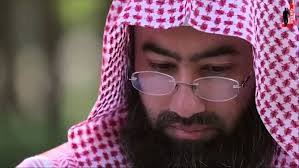Note: The reciter is a native Persian (most southern Iranian Sunnis are ethnic Persians, except a small minority of Arab Sunnis in the south) and . How come Persian Sunnis (just like all non-Arab Sunnis) master the recitation of the Qur’an, yet the majority of Shia scholars, including their most senior Ayatollats can’t even pronounce the Fatiha correctly without adding their ugly accent?!
Location: Bandar Abbas, Suru.
Mosque: Hajj Yussef Masjid
Qari’/reciter: Abdussattar Samak (native southern Persian Sunni)
Tarawih prayer, 7th night of Ramadhan 1435/2014تلاوت آیات 159 الی 165 سوره آل عمران
توسط عبدالستار سماک
نماز تراویح شب هفتم رمضان 1435
مسجد حاج یوسف بندرعباس – سور
Adhan on the 27th night of Ramadhan 1435/2014:
اذان عبدالستار سماک
27 رمضان 1435
مسجد حاج یوسف
29th Ramadhan, verse 1-10 of Surah Baqarah:
Location: The Haj Yussef Mosque, a Sunni Mosque in Suru, Bandar Abbas, southern Iran.قرائت سوره بقره،
از آیه 1 الی 10،
قاری:عبدالستارسماک با صوت سدیس
نماز صبح ، مسجد حاج یوسف ، 29 رمضان 1434
27th of Ramadhan, Du’a after Witr:
قسمتی از دعای شب قرآن 27 رمضان 1435 باصدای برادرتان عبدالستارسماک
البته فیلم ازجمعیت بیرون مسجد گرفته شده
— at Bandar Abbas
 Whether or not an ethnic Persian exists in the world is a topic where one will hear many opinions and arguments. Some (often Iranian nationalists) argue that the Persian-speakers of Iran are not an ethnic group but rather a lingual group (like most Arab speakers in the Arab world who although are culturally and linguistically Arab, yet very few can claim to be of pure Arab origin, although undoubtly many do have Arab ancestry).
Whether or not an ethnic Persian exists in the world is a topic where one will hear many opinions and arguments. Some (often Iranian nationalists) argue that the Persian-speakers of Iran are not an ethnic group but rather a lingual group (like most Arab speakers in the Arab world who although are culturally and linguistically Arab, yet very few can claim to be of pure Arab origin, although undoubtly many do have Arab ancestry).





 When the Safavids under Ismail I decided to convert everyone residing in current day Iran from Sunni to Shiite Islam in 1501, they started arranged attacks and massacres against the Sunni Persians who refused to convert. As a result, many Sunni Persians left their hometowns for the Zagros mountains. After the Battle of Chaldiran where the Safavids lost to the Ottoman the Sunni Persians descended from the mountains to begin a new life in the land they named “Bastak”, meaning barrier or backstop signifying barrier from Shiite Safavids’ attacks and influences.
When the Safavids under Ismail I decided to convert everyone residing in current day Iran from Sunni to Shiite Islam in 1501, they started arranged attacks and massacres against the Sunni Persians who refused to convert. As a result, many Sunni Persians left their hometowns for the Zagros mountains. After the Battle of Chaldiran where the Safavids lost to the Ottoman the Sunni Persians descended from the mountains to begin a new life in the land they named “Bastak”, meaning barrier or backstop signifying barrier from Shiite Safavids’ attacks and influences.







You must be logged in to post a comment.